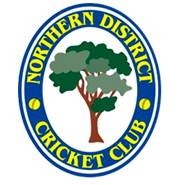Ross Turner - keep an open mind
Northern District Cricket Club Sydney | January 30, 2023
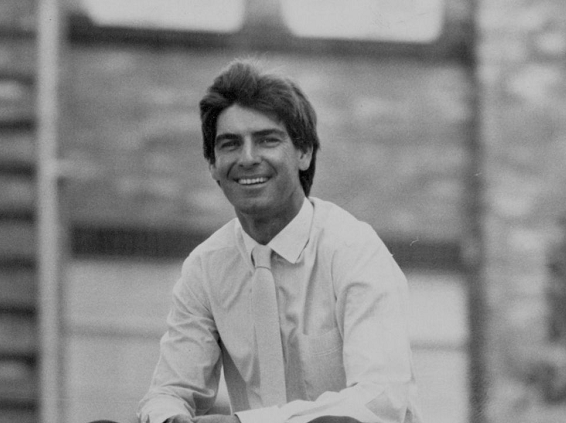
Ross Turner made his first grade debut for Northern District Cricket Club on 20 November 1976 against Sutherland DCC at Caringbah Oval to become NDs first grade player 259.
In a first grade career spanning 1976 to 1993 Ross scored 5,302 runs at an average of 29.45 including 3 centuries and 29 half centuries.
Ross was the captain of Northern District for many years and regarded as one of the most astute and inspiring leaders not only by his team and club but across the Sydney Grade Cricket.competition.
Ross has made an incredible contribution to the game. He's a multiple premiership winning captain but since retiring as a player Ross coaching and administration contribution around the world has and continues to be tremendously influential.
The Hornsby Ku-ring-gai and Hills District Cricket Association annual Under 15 match featuring outstanding juniors in the Association is played for the Ross Turner Cup.
Ross Turner became a Life Member of Northern District Cricket Club on 13 July 1994. Let’s find out more about Ross journey in the game
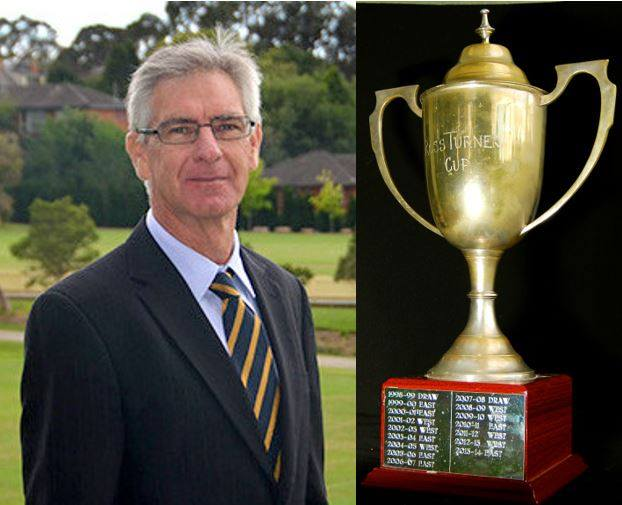
The Ross Turner Cup
What year you were born?
1956
Can you remember you first game of cricket?
Pennant Hills West vs Asquith Public School at Campbell Park [Cherrybrook]; Aged 9; soundly defeated by an opposition that included the ‘Jessup brothers.
Tell us briefly about your cricketing journey?
Our family home was at Beecroft, so I played locally with Pennant Hills West Primary School under Ian Black’s tutelage, then Pennant Hills Sports Club & Hornsby Kuring Gai & Hills DCA.
Following this I played for Pennant Hills District [Shire] Cricket Club then joined Northern District Cricket Club.
I also played in the UK & India [club cricket & tours].
In which grade & at what age did you make your debut in grade cricket?
Fourth grade [Northern District CC], aged 16 Years.
At what age did you make your first-grade debut in grade cricket & can you remember how you performed in debut?
18 Years vs Sutherland at Caringbah Oval in a rain interrupted match; stepping up when Steve Bernard & Mark Clews were on duty with the NSW Blues; Sutherland DCC’s line-up featured West Indian pace bowler Andy Roberts.
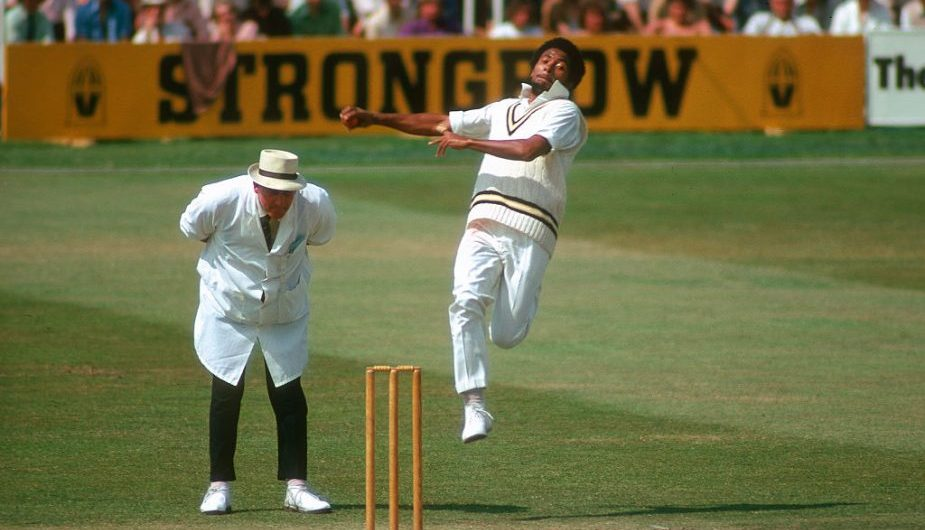
Andy Roberts
If you can share with our audience, how would you describe yourself as a cricketer?
Started grade cricket as a wrist spin bowler & batsman then morphed into a specialist batsman.
What were your strengths as a player?
Though unfashionable, I had a sound defence & used timing rather than power to eke out a few runs. John Sullivan, a fast bowler from Petersham Marrickville & later Campbelltown, suggested that the boundaries should be shortened given I was unable to hit the ball off-the-square. In the field, I was agile & caught well.
What was your highest score in senior cricket?
157 vs North Sydney playing 2nd XI for Northern District CC playing at Waitara Oval.
Who were the best three fast bowlers you have played against?
Numerous pace bowling protagonists come to mind, namely: Geoff Lawson [UNSW], Michael Whitney [Randwick], Evan Gordon [Randwick], David Gilbert [Western Suburbs], Greg Watson [UNSW], Brett Lee [Campbelltown then Mosman], Shane Lee [Mosman], Len Pascoe [Bankstown], Steve Bernard [St George], Richard Done [St George], David Chardon [Petersham-Marrickville], Gary Whitaker [Randwick], Tim Sullivan [Bankstown then Penrith], John Skilbeck [Mosman], Richard Stobo [Gordon], Greg Hartshorne [Petersham Marrickville], Andrew Jones [Balmain], Murray Radcliffe [Western Suburbs], Paul Steptoe [St George] & John Sullivan [Petersham-Marrickville then Campbelltown]. For Northern District: Steve Bernard [end 1978-79], Mark Clews, Peter Vilimaa, Michael Coote & Neil Maxwell. Of these, I nominate:
Geoff Lawson [UNSWCC] was an imposing bowler; electric pace, extracted bounce & late movement which meant that it was only a matter of time! He was able to change the fate of a match in a spell. Superior tactician. Now an excellent pace bowling coach for players at all levels. Splendid coach all round.
Michael Whitney [Randwick’s] was menacing. He possessed a clever repertoire including a nasty bouncer. Michael could also intimidate mentally. Excellent company when not standing 22 yards away!
Steve Bernard’s [Northern District then St George] explosive pace was a feature of his early years though he later re-invented his bowling to become an artful seam & swing bowler who troubled all opponents. Steve led St George to a premiership flag in 1984-85 with a match winning performance with the ball. Wonderful storyteller.
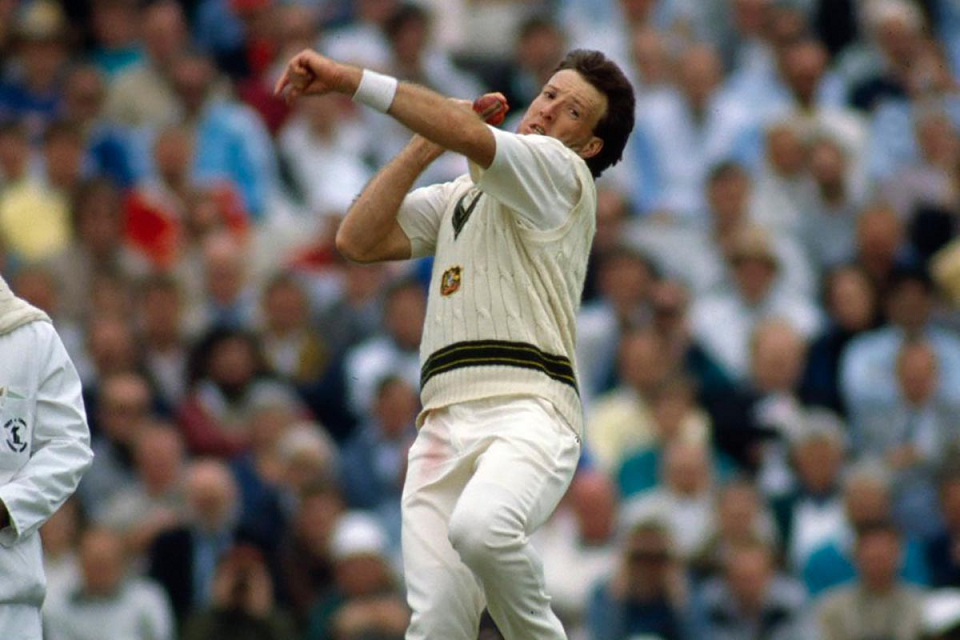
Geoff Lawson
Who were the best three spinners you have played against?
Most teams carried high quality spin bowlers, namely: Murray Bennett [St George], David Hourn [Waverley], Wayne Mulherin [Balmain then Petersham-Marrickville], Greg Matthews [Parramatta then Western Suburbs then Easts then Sydney University], Mark Ray [UNSW], Gavin Robertson [Balmain then Manly] Paul Talbot [Bankstown], Tom Shiner [Campbelltown], David Freedman [Bankstown], Trevor Jay [Randwick], Greg McLay [Balmain], Paddy Grattan-Smith [UNSW], Ken Hall [Penrith then Bankstown], Mark Osborne [St George], Michael O’Sullivan [Sydney University], Christopher Elder [Sydney University then NDCC], Mark England [Campbelltown], Mark Chapman [Sutherland], Mark Preddy [Sutherland], Adrian Tucker [Balmain] & Ro Shelton [North Sydney]. At Northern District, Peter Taylor, Stephen Whitfield, Paul Grimble, Bruce Mills & Greg Briggs. Of these, I nominate the following:
Murray Bennett’s unerring accuracy, subtle variations [including his renowned arm ball], quiet tenacity & capacity to read the game placed him in the top echelon.
David Hourn’s mercurial [left arm] wrist spin featuring dramatic turn, flight & drift could change the course of any match which he frequently did. His wit was as incisive as his spin!
Greg Matthews’ sustained high-quality spin troubled all comers utilising clever variations to penetrate a batsman’s weakness: relished a contest & relentlessly sought to shift the momentum of a match in his team’s favour. Chatty.
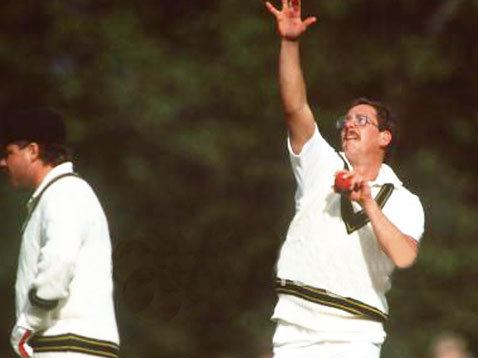
Murray Bennett
Who were the best 3 batsman you have played against?
Mark Waugh [Bankstown] scored 138 at Waitara [1984-85] with his typical elegance & surgeon-like placement, at times threatening the safety of the tennis players at the southern end of the ground [we were willing Mark out, & at the same time, marvelling at his strokeplay].
Dirk Wellham [Western Suburbs] made a faultless 120 on a lively Pratten Park wicket [1977-78] against an attack that included Steve Bernard, Mark Clews & Kerry Mackay. Remarkable concentration. Understood ‘what went into not getting out. Skilful captain.
John Dyson’s [Sutherland, Randwick & Sydney University] capacity to adapt to playing conditions & successfully navigate situations sets him apart. A precise & powerful stroke player who was at home against the quicks as he was the spinners. Difficult to dismiss once set.
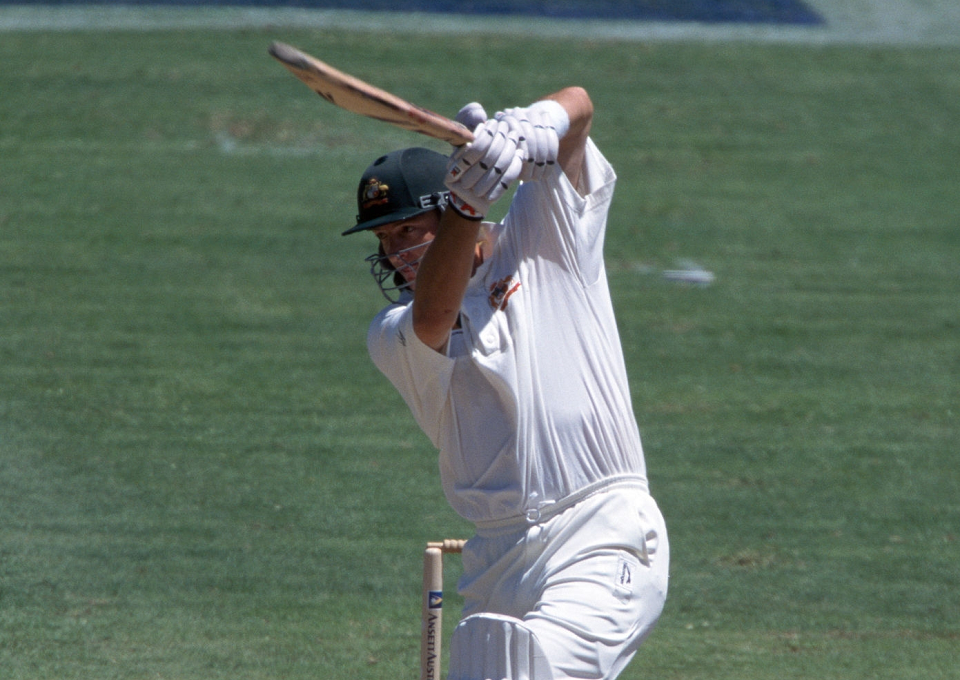
Mark Waugh
Who played the best innings you have seen firsthand playing with or against? And if you could add a few words as to why?
Graeme Smith [St George] of Stock & Bingle fame scored a peerless unbeaten 180 at Hurstville Oval in the mid-80s to flay an accomplished NDCC attack to all parts of the ground & beyond. Impressive though curiously short first-class career. Irresistible dry wit.
Was there any bowler who for whatever reason always you to cause you a few problems?
Mostly succumbed to Murray Radcliffe [Western Suburbs] & John Grimble [Sydney University – formerly NDCC]. Both moved the ball appreciably & late. Assume both would consult the fixture list prior to the season to see which round each was drawn to play NDCC then add another wicket to their respective tallies!
Can you recall a time when you thought, wow, this is a step or two up from what you were used to in grade cricket & you really had to knuckle down to survive?
Michael Whitney & Evan Gordon were a formidable combination. I recall batting [read surviving] for a period in a semi-final played between NDCC & minor premiers Randwick on lively Coogee Oval strip in 1981-82. In an afternoon’s cricket I learned the value of high-quality pace bowling supported by a proficient wicket keeper in Alan Campbell & brilliant catching / fielding unit. Trevor Jay’s miserly left arm orthodox spin added another dimension to Randwick’s play. This combative experience provided a host of insights about the standard of play to achieve finals success & to produce cricketers able to perform at first class level. From that point we went to work.
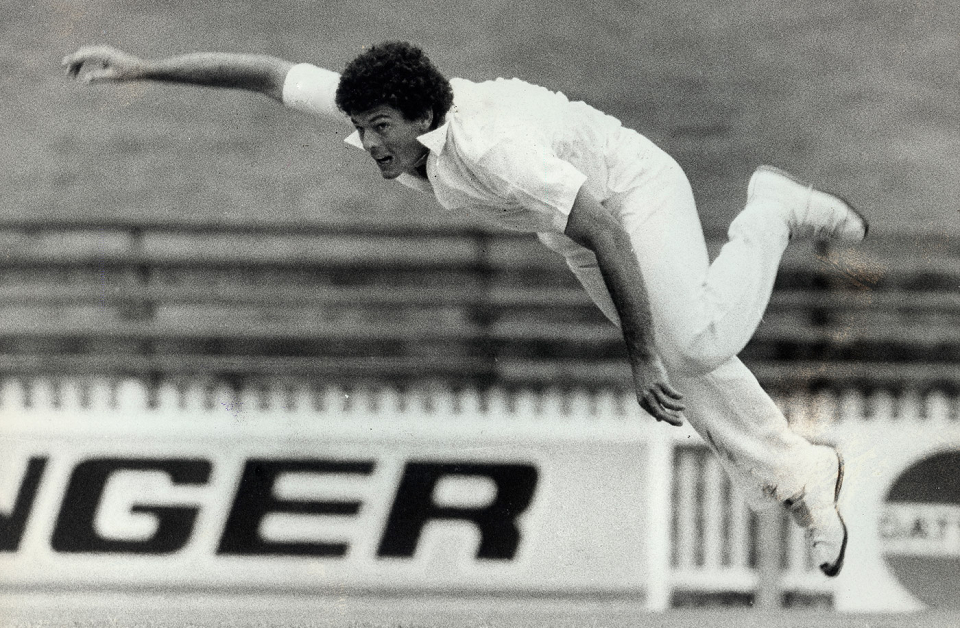
Mike Whitney
Who was the best wicket keeper you have seen firsthand playing with or against?
Tim Ebbeck kept wickets superbly for Northern District for a decade [1980s]. He was a fine technician, excellent tactician & team player. Tim was a brilliant foil for orthodox spinners Stephen Whitfield & Peter Taylor.
Alan Campbell [Sutherland then Randwick] was a classical technician. He was also athletic & a superior tactician. Whether standing back or up Alan influenced the game, elevating his team’s performance & individuals therein.
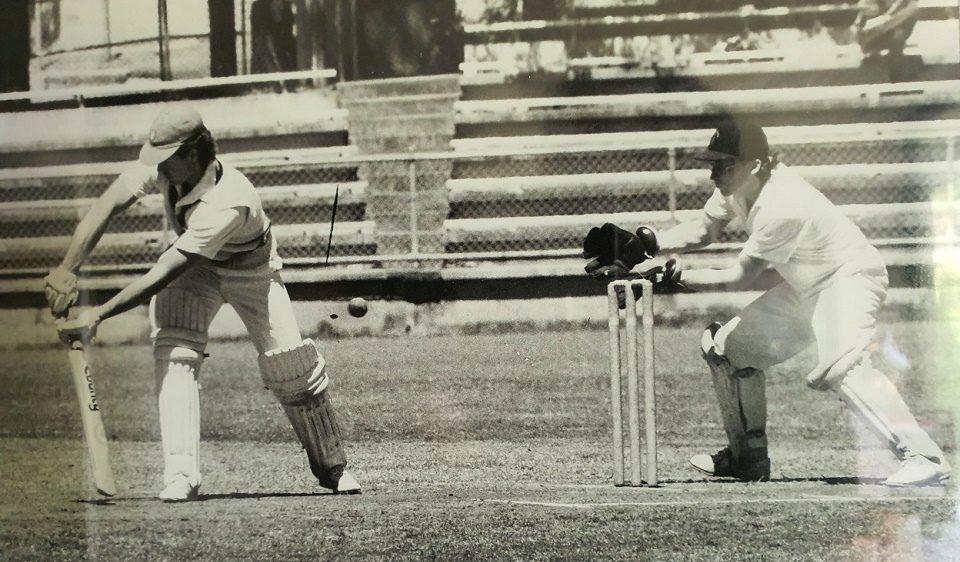
Tim Ebbeck behind the stumps
Who was the best fielder you have the good fortune to play with?
Paul Terry [Northern District, Hampshire & England]; wonderful all-round fielder, caught at slip & patrolled the in-field with athleticism & speed. Deadly arm.
Who was the best slips fieldsman you played with?
Neil Howlett, Mark Taylor & Kerry Mackay [Northern District then Manly] caught whatever came their way.
Who are the two players you admired most in terms of skills & competitive spirit in the competitions you played?
Mark O’Neill [Manly then Gordon] was a class act with the bat. On arrival at the crease, he placed pressure on the bowlers by seizing ascendency with precise & powerful strokeplay. His capacity to score from good deliveries was a point-of-difference & in so doing reduced bowlers’ margins. Mark relished a contest & it is reasonable to suggest that as the standard of bowling improved his level lifted. Equally at home to spinners as to pace bowlers, he won numerous matches off his own bat as well as engendering confidence in his fellow batsmen. Now a renowned coach, Mark works with a host a host of emerging & first-class players.
Randal Green [Northern District] was a fine player who understood his game better than most. He applied his considerable skill with disarming nonchalance. Emblematic of this was his masterly unbeaten century in a semi-final against North Sydney on a lively Drummoyne Oval wicket to guide Northern District into the 1985-86 1st XI final. His laconic style concealed fierce concentration, an impenetrable defence & controlled aggression. Later Randal was selected for NSW then captained Northern District 1st XI to the 1992-93 premiership. In the same year he won an O’Reilly Medal.
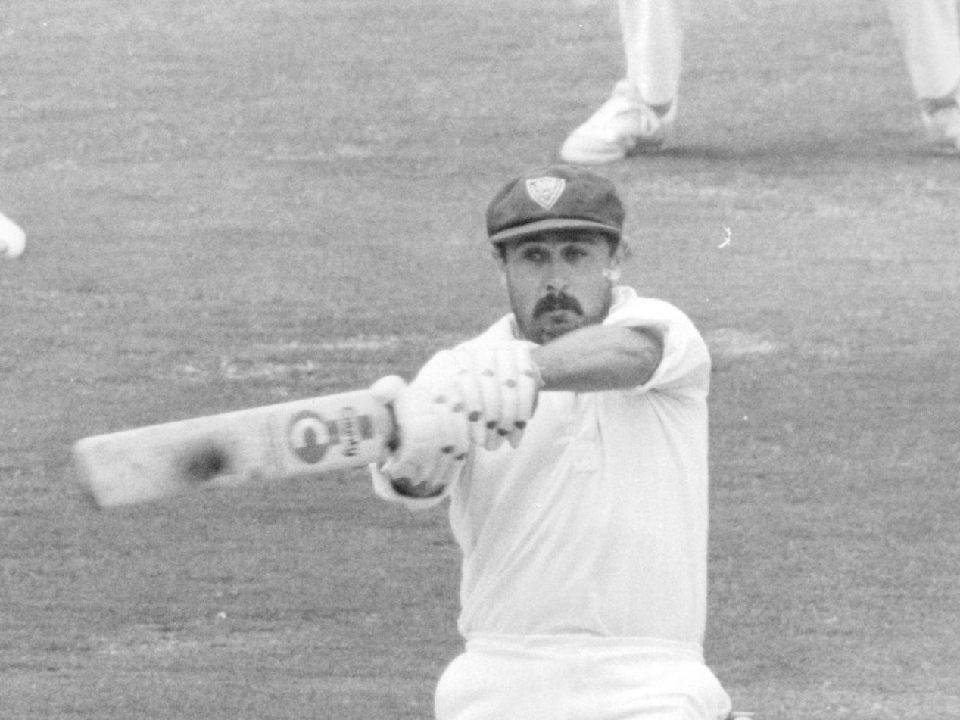
Mark O'Neill
You were instrumental in a very successful era for Northern District in the 1980s, what was it about the team & club that influenced the success?
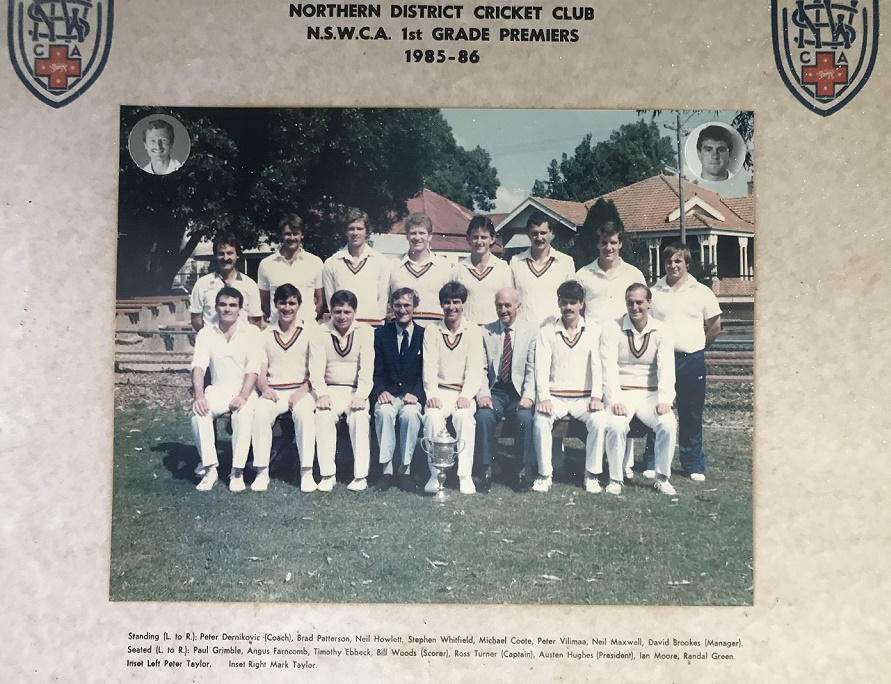
Northern District First Grade premiers 1985-86
The Club has steeped history [1925] founded on significant & life-long contributions from people including Tim Caldwell OBE, Austen Hughes OAM [Club President for 33 Years], Neil [Harpo] Marks OAM [Patron], Tom Richmond OAM, Ken Tulk & Jim Barrett is now being successfully carried forward by Jeremy Hook at the helm with an impressive team of administrators including Michael Langford, Peter Vilimaa & Graham Gorrie.
The 1980s proved a successful period due in part to the quality & influence of the leadership of Austen Hughes [President for 33 Years] & his coterie of supporters in Ron Grimble, Rocky Harris, Reg Tulk, Frank Clark, Tom Richmond & Hilary Griffith. Neil [Harpo] Marks was a tremendous influence in every aspect & together with Phil Blazey, Ken Longley & Ian Fraser [as captains] provided a wonderful environment for younger & aspiring cricketers to play at higher levels.
The Club enjoyed a reputation of attracting skilled cricketers who were also of good character & it followed that standards were upheld on & off the field.
Ross Edwards [Aus & WA] captained the 1st XI during for three seasons during his exile from establishment cricket [WSC contracted player] & moulded a competitive outfit that would be runners-up to UNSWCC in 1980-81. Ross, together with Kerry Mackay, Mark Clews, Robert Oakley, Denis Lynch & Stephen Whitfield provided excellent guidance to a young brigade of players including Neil Howlett, John Moran, Paul Price, Michael Coote, Peter Vilimaa & Paul Grimble.
Meanwhile an emerging group of players including Tim Ebbeck, Brad Patterson, Stephen Day, Randal Green, Stephen Liggins, Angus Farncomb, John Grimble, John Whelan, Bruce Mills, Greg Briggs, a young Mark Taylor & younger Neil Maxwell, showed their mettle by twice winning Poidevin Gray Shield titles, then 2nd XI premierships. A skilful & confident new breed was on the rise & through high quality & consistent performance demanded selection in the top grade.
In consequence, the 1st XI premiership teams of 1985-86 & 1986-87 were a blend of players from the Edwards’ period & graduates from David Glasson & Stephen Day’s 2nd XI title winning teams in 1981-82 & 1983-84 respectively. The players’ skill levels & aspirations were matched by their understanding & adherence to clearly defined roles.
We had had a skilled pace attack in Peter Vilimaa, Michael Coote, Stephen Liggins, & [a dynamic] Neil Maxwell. Brad Patterson & Randal Green were resourceful intermediaries & complemented the artful spin bowling of Peter Taylor, Stephen Whitfield & Bruce Mills. Tim Ebbeck led the fielding unit with aplomb which also featured the safe hands of Mark Taylor, Neil Howlett, Ian Moore & Neil Maxwell.
Batting-wise, Mark Taylor [when not first-class duty], Neil Howlett, Ian Moore, Randal Green, Brad Patterson, Neil Maxwell & Angus Farncomb proved an impressive & reliable line-up. Case in point, Brad Patterson [father of Kurtis] played the innings of his life [74*] against a formidable St George attack to guide the Club to its first 1st XI flag in two decades. He was ably assisted by Peter Vilimaa, who earlier in the match secured 6 for 33 to give Northern District ascendency.
My role as captain was to set the direction, define roles & extract the best from individuals & the team collectively. As trite as it sounds, partnerships with the bat & ball were key. Tim Ebbeck’s efforts with the gloves were instrumental to the team’s success, effecting effect catches, stumpings & run outs, as well as lifting fielding standards. We had a tight fielding outfit.
We were blessed to have a clever, passionate & resourceful dressing room.
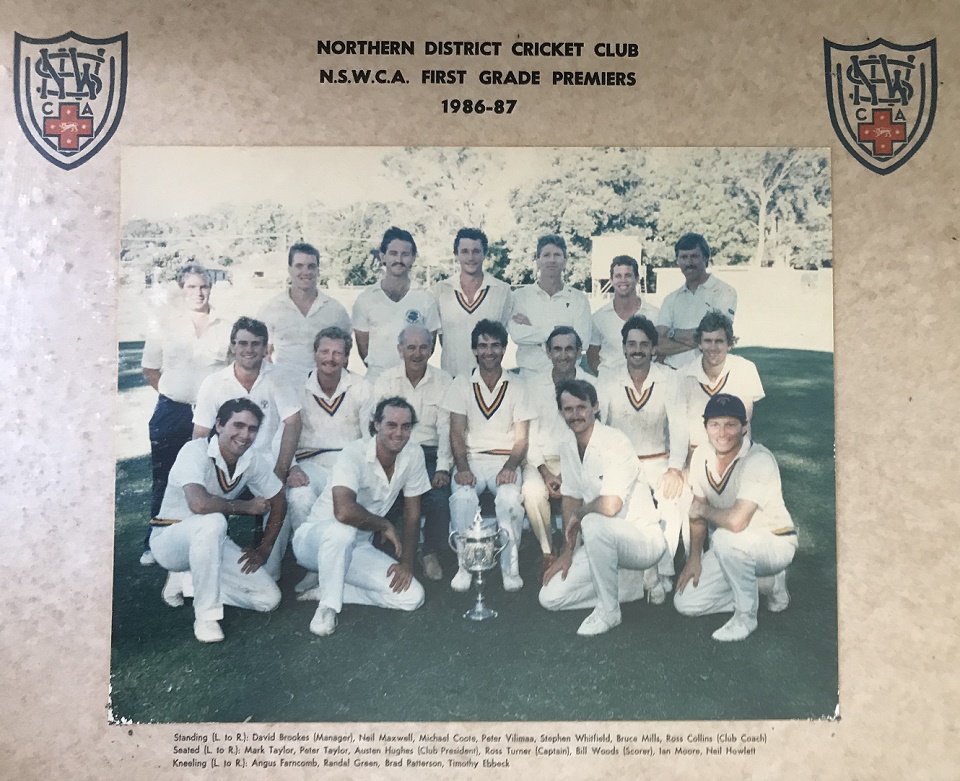
Northern District First Grade Premiers 1986-87
You were a very successful & highly respected captain; how would you best describe your leadership style?
Consultative, decisive & people oriented. As mentioned elsewhere, I was / we were fortunate to be able to draw on the extensive experience of people at the Club like Neil [Harpo] Marks, Austen Hughes, Ken Longley, Tom Richmond, Tim Caldwell, Kerry Mackay & Mark Clews. Beyond this I looked to Michael Pawley, Ross Collins, Peter Dernikowitz, Paul Terry [UK] & Alan Burridge [UK] among others for inspiration, ideas & feedback.
Within the team [& Club] there were numerous leaders, notably Mark Taylor, whose captaincy record at international level speaks for itself. As a younger player he provided insights that belied his age. Purposeful, affable & humorous, Mark offered ideas & suggestions that characterised his tactical nous & excellent judgment [of situations & people]. Neil Howlett was a fine player & brilliant tactician. Peter Taylor brought his pragmatic approach & was always in the game. Tim Ebbeck instilled energy. Randal Green’s laconic style lent perspective. Brad Patterson & Ian Moore’s commitment coupled with sharp wit contributed to the team’s performance, & the enjoyment derived. There were others of course. All played a role on this front. ‘By joves it was fun!
Who was the best captain you had the good fortune to play with?
Neil [Harpo] Marks, Club legend, stood down from the 1st XI in the early 70s to captain the 2nd XI with the view to fostering younger cricketers. A larger-than-life figure with a brilliant capacity for storytelling [refer Tales from the Locker Room], Harpo taught us everything about the game & a good amount about ourselves. Put simply, he showed us how to compete, respect our opponent & cherish the game. Harpo relished a declaration, as he did set or chase a target. He gifted us a love of attacking cricket plus a host of long-term friendships.
Ross Edwards was an excellent captain & during his relatively short term with the Club showed us what it took to succeed at 1st XI cricket [& beyond for some]. He trained with vigour & purpose, set challenging targets & led by example. It follows that individually & team-wise, we improved. Case in point was the exponential growth in Neil Howlett, Paul Price & John Moran’s batting, & Michael Coote & Stephen Whitfield’s maturation with the ball.

Neil Marks
Who has been your funniest teammate?
Michael Coote. Supporting cast: Tim Ebbeck & Ian Moore.
Can you recall some banter or an exchange on the cricket field that still makes you laugh?
Delightful slip of the tongue by Stan Sismey, then Chairman of the NSW Selection Panel, when presenting the Belvedere Cup [1st XI Premiership Trophy] following Northern District’s closely fought win against Campbelltown at Waitara in 1986-87: ‘We congratulate Ross & his team on their victory & it is my honour to present the Bledisloe Cup’.
What was your most embarrassing dismissal in senior cricket?
Out handled ball.
Who was your childhood hero?
Cricket-wise, Sir Garfield Sobers
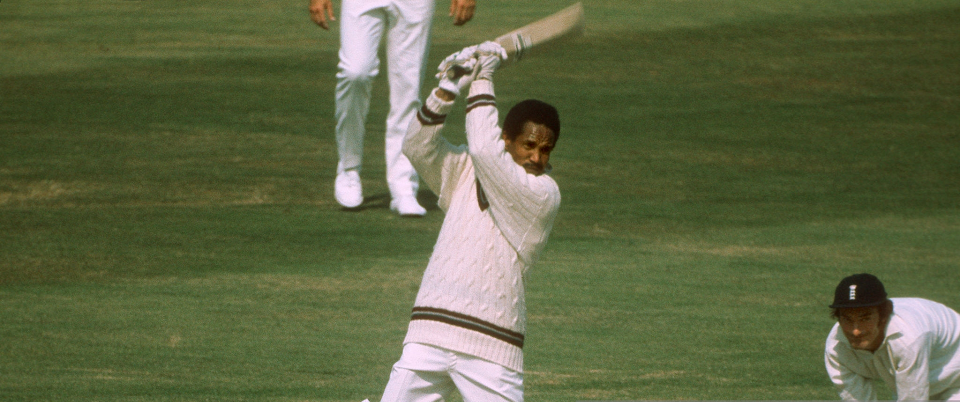
Who is your favourite cricket commentator?
Richie Benaud OBE
What was your favourite ground to play at?
Waitara Oval, Arundel Castle & Brabourne Stadium
Was there a particular team you especially looked forward to playing against?
We relished our contests against UNSWCC especially played at the Village Green. Good cricket, fine hosts & a lovely setting.
‘Though ‘The Bank was a newcomer to the Grade scene, John Rogers & Terry Buddin cleverly recruited student cricketers principally from country regions & forged a series of teams that dominated premier cricket from the mid-70s to early 80s in addition to producing several first-class players.
Austen Hughes, President of NDCC, had developed a rapport with several of the UNSWCC 1st XI players who joined the 1977 Australian Old Collegians World Cricket Tour. Affectionately known as The Ger, Austen introduced us to Paddy Grattan-Smith, Steve Campbell & Jock Martel after which we came to know & enjoy the company of Mark Ray, Chris Chapman, Greg Livingstone, Geoff Lawson, Greg Watson, Jim Robson, Jim Dixon, Bruce Handley, Jamie Baker, Peter Jourdain, Michael Watt, Chris Hanger et al. Of course, we had known Peter Tout from his time with Northern District as an accomplished batsman, excellent captain & friend, who was now studying architecture at UNSW.
Regardless of the on-field travails we thoroughly enjoyed UNSWCC’s post-match hospitality in the Sam Cracknell Pavilion & then onward to local establishments. Those with stronger constitutions would head to Dixon Street for a late-night meal with Jim Robson leading the storytelling count aided by a support cast including Michael Coote, Peter Vilimaa & Greg Livingstone.
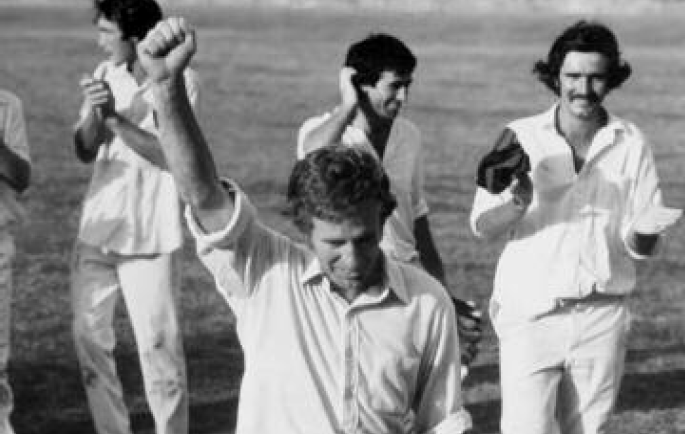
John Rogers skipper on UNSW
What has been your most memorable moment in cricket?
No single instance. My most abiding memory is of the myriad of friendships that the game has provided. Brilliant team / club companions & opponents including the likes of Ken Hall [Penrith then Bankstown] characterised by his legendary on-field tenacity that dissipated on reaching the pavilion where there would be a recap of the day’s play plus a host of incredulous stories. Same for Jon Jobson [St George], Sullivan brothers John, Steve & Chris [Petersham Marrickville], Greg Hill & Richard Fry [Manly], Greg Bush [Mosman, North Sydney then Petersham Marrickville], Richard Stobo [Gordon] & Gary Crowfoot [Bankstown].
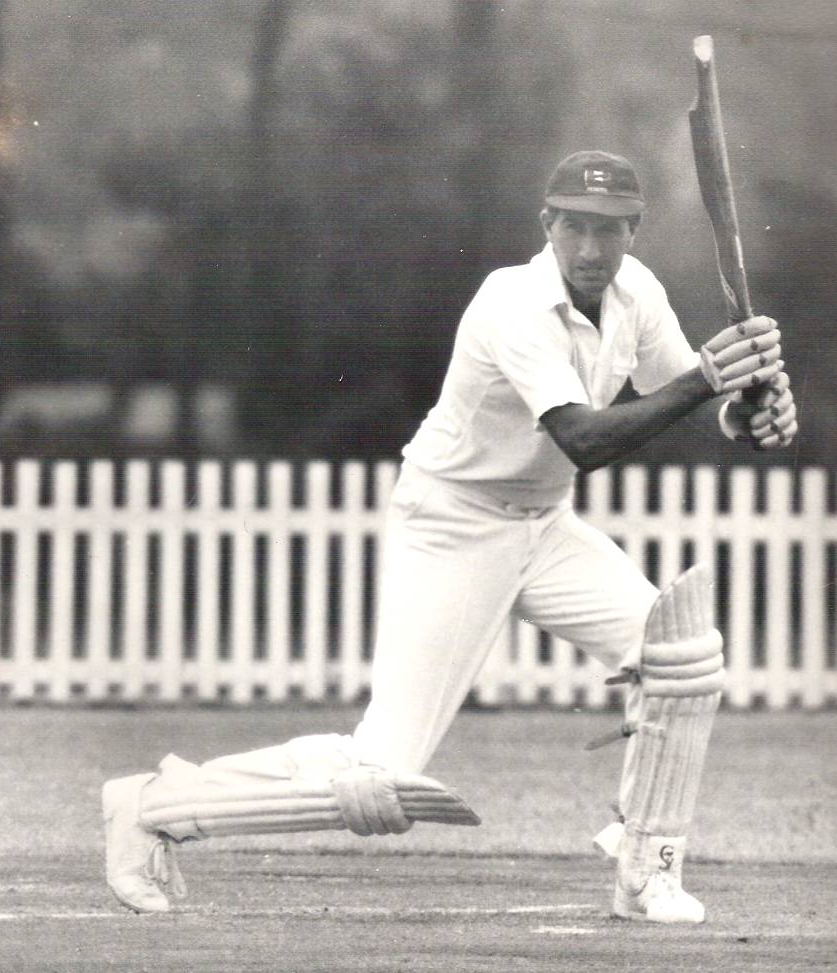
Ken Hall
What is the best win you have been involved with?
Paul Bourke [Campbelltown] may not concur, however, the 1986-87 final played at Waitara Oval was a memorable win. Earlier in the season the same teams had contested a limited over final with Campbelltown taking the honours under Bourke’s astute captaincy. So, the teams knew each other well.
Northern District’s 167 on the opening day [despite a well-compiled half century by Peter Taylor] never seemed enough & with Campbelltown placed at 57 for 1 at stumps, the prospect of a home team victory was unlikely. We resumed the following morning with steely resolve. Peter Taylor & Stephen Whitfield combined superbly producing a sustained spell of spin bowling to dismantle Campbelltown’s impressive batting line-up. Taylor’s [3 for 43 from 35 overs] & Whitfield’s [3 for 33 from 36 overs] speaks for itself. Tim Ebbeck’s ‘keeping was high-end as was the fielding effort. Peter Vilimaa claimed the final wicket of the match [to cap a fine individual season] to give Northern District the match by a margin of 33 runs, & with it a second consecutive 1st XI flag. Austen Hughes, Club President, considered it one of the better comebacks that he had witnessed.
Campbelltown: P Bourke [c] P O’Reilly, B Williams, C Peck, D Laming, D Pringle, M England, B Thebridge, T Shiner, J Lillis [wk] & J Sullivan
NDCC: R Turner [c], M Taylor, N Howlett, R Green, I Moore, P Taylor, B Patterson, N Maxwell, P Vilimaa, T Ebbeck [wk] & S Whitfield; Res A Farncomb & M Coote
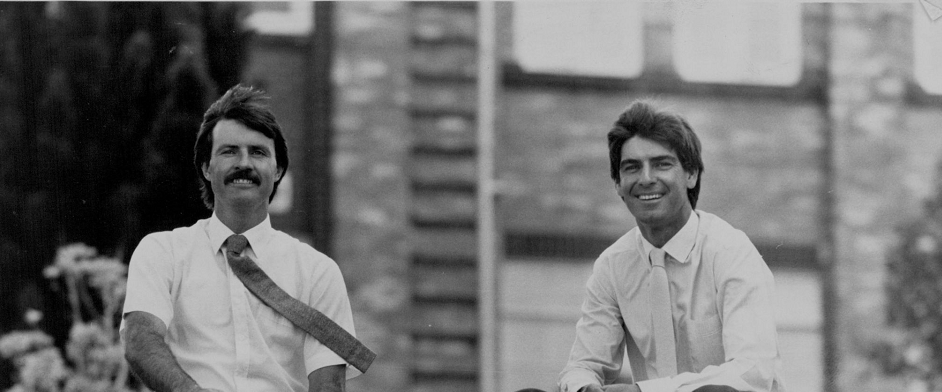
Paul Bourke (left) and Ross Turner - opposing skippers
Who are the three players from your playing days at the top of the list for a Saturday afternoon barbeque?
Mark Sewell, James Rodgers & Tim Sullivan plus Christopher Elder.
What are your hobbies?
Gardening & cooking.
What is the best advice you have received?
Keep an open mind.
What is your occupation & who do you work for?
Teacher & Director of Cricket at Newington College.
You have been heavily involved in cricket from an administrative & coaching perspective for many years now. Can you share with us some of the highlights from your perspective & what you are most proud?
I was privileged to have worked in cricket with international, national & state organisations for 25 years. Ever an issues-rich environment, I have witnessed cricket evolve from cottage industry to mainstream entity [driven principally by India]. During this time, I was involved in senior management positions principally in the realm of cricket & business development, now referred to as new markets. The scope of work was varied & fascinating including a start-up of cricket in China, involvement in the formative stages of cricket’s anti-corruption strategy, development of cricket in sub-Sahara Africa, & advocacy & development of women’s cricket.
During my time with the ICC, I was fortunate to have worked with a host of inspiring people including Dr Ali Bacher, Ehsan Mani, Malcolm Speed, Majed Khan, Jagmohan Dalmiya [late], Syed Ashraful Huq, Dr Simone Gambino, Shubhangi Kulkarni, Percy Sonn [late], Raj Singh Dungarpur [late], Nigel Laughton, Andrew Eade, Matthew Kennedy & Hussain Ayoub [late] whose vision was to make the game accessible to peoples of all ages, abilities & backgrounds.
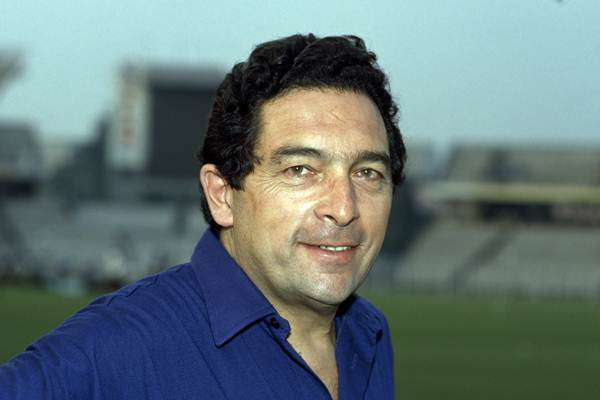
Dr Ali Bacher
In a national context, I was able to draw on the sharp minds & considerable experience of people such as Brian Freedman, Belinda Clark, Dr Bruce Walker, Vince Copley, Ron Steiner, Bob Radford [late], Brian Taber, Christina Matthews, Rob Thompson, Alan Campbell, Peter Hanlon, Mark McCallion, Warren Smith & Ashleigh Toot Byron to implement cricket initiatives for first peoples, create structures & promote women’s cricket, revise coaching programs & establish a national club cricket insurance scheme.

Belinda Clark
I have maintained an involvement in coaching & coach education with an occasional foray to India, Pakistan, Sri Lanka & Bangladesh. In the early 2000s Cricket Australia established a compact with the Asian Cricket Council which resulted in a coach accreditation scheme for all Asian cricket nations. Through Syed Ashraful Huq’s vision & the dedicated efforts of a panel of educators [including Toot Byron, Alan Campbell, Peter Hanlon, John Harmer, Chris Harris, Martin Gleeson, Yuzhou Lin & Natasha Campbell] coach accreditation programs were delivered Asia-wide to improve the quality of coaching, & in turn, playing standards in Test & non-Test nations.
A decade on the shift has been considerable with many nations adopting the scheme & developing coaches & players alike. Case in point, Thailand women’s cricket, which was non-existent in 2007, played in the 2020 ICC Women’s T20 World Cup. Mohideen Kader, Shan Kader & Sornnarin Tippoch’s leadership & coaching acumen was exemplary. Same for Ali Zia, Abdul Rehman, Iqbal Sikander & Shahid Aslam in Pakistan; Mahbub Anam, Nazmul Fahim Abedin, Md Aminul Islam & Shahidul Alam Ratan in Bangladesh; Binod Das & Roy Dias in Nepal; Rumesh Ratnayake & Ruwan Kalpage in Sri Lanka; & Dr Lui Jing Min in China. While this work is ongoing the achievements of these people [& many others] are recognised & celebrated.
Across the years I have considered myself fortunate having met & developed friendships with Tom Richmond, Austen Hughes [late], Neil Marks, Alf James, Toot Byron & Brian Freedman. All have been constants, in life & cricket, & I am indebted to them for their guidance & support.
If you were running Cricket NSW what would your two priorities to ensure cricket in the state remained strong & successful on & off the field?
Firstly, invest more substantially [financially & organisationally] in Club cricket. Second, focus greater attention [resources] on coaching across the breadth of the cricket system.








